A deep winter freeze can be filled with challenge, surprise, sadness – and moments of unfettered joy. My tips, and findings from winters past, will help to keep your greenhouse and garden ticking over when temperatures plummet, keep wildlife safe, and keep you cheerful through the bleak months ahead.
Snow load
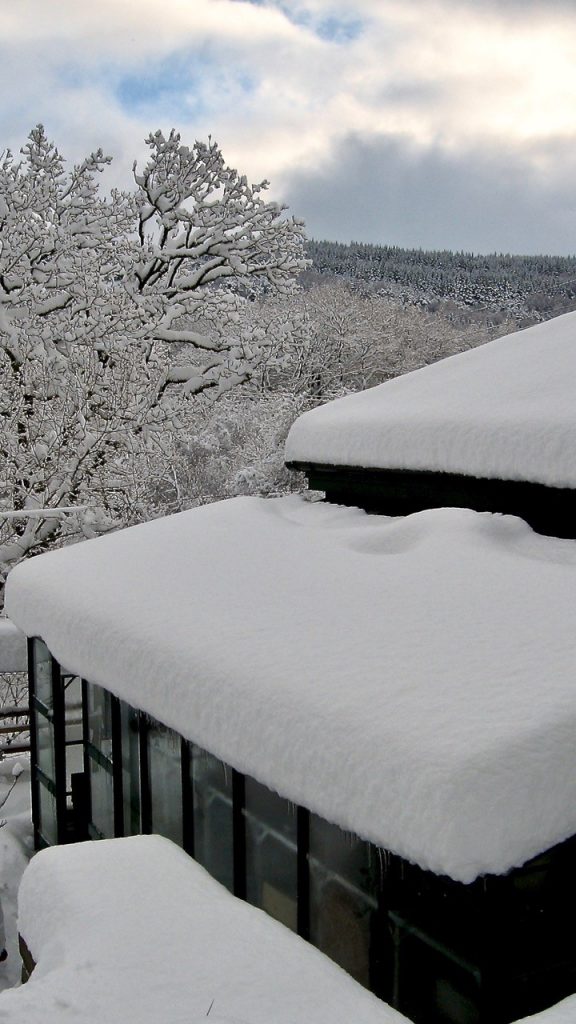
Most greenhouses are strong enough to carry the weight of a few centimetres of snow, but when it reaches 15cm or more (like it did here on my unheated lean-to), it’s worth keeping an eye on how your structure’s bearing up. Don’t forget to close the vents. A freestanding greenhouse with a steeply angled roof will often shed snow easily, especially if it’s wet. For any that hold on to their snow (like mine), it’s worth carefully reducing the load by using a soft broom to drag the snow toward you. Firing up an electric heater inside the greenhouse for 15 minutes or so first will loosen the snow, making it easier to remove.
Sub-zero slump
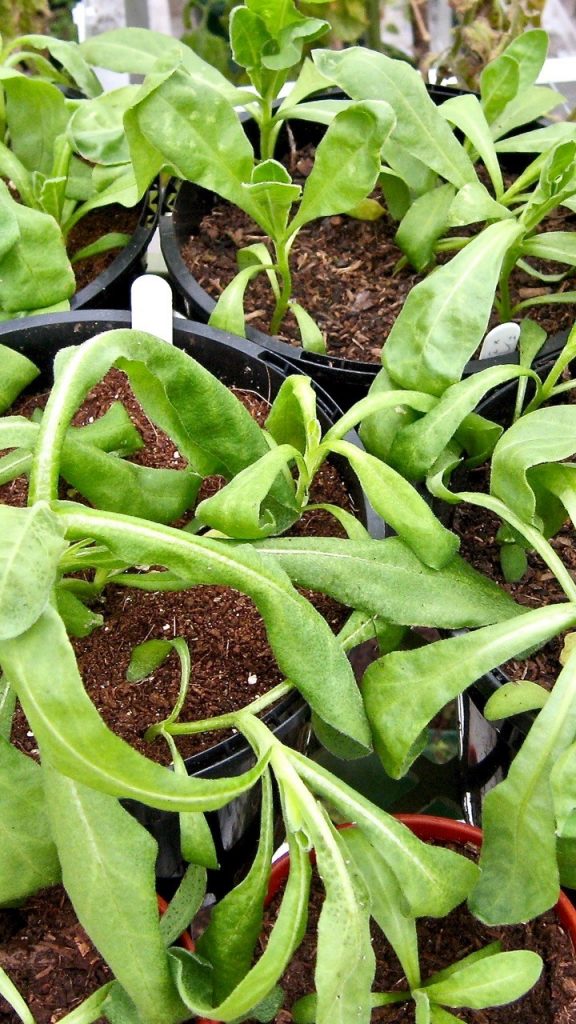
Plants in an unheated greenhouse do funny things when a big freeze sets in. They turn darker and look as if they might actually be wilting – but they’re not. These single-flowered pot marigolds (calendula) sagged when the temperature dropped several degrees below freezing, and the compost froze solid (for a couple of weeks). This happens to even the hardiest of plants, and all you need do is… let them be; don’t move them indoors or water them. They’ll perk back up when the thaw comes. These overwintered plants went on to flower their heads off.
Safety first
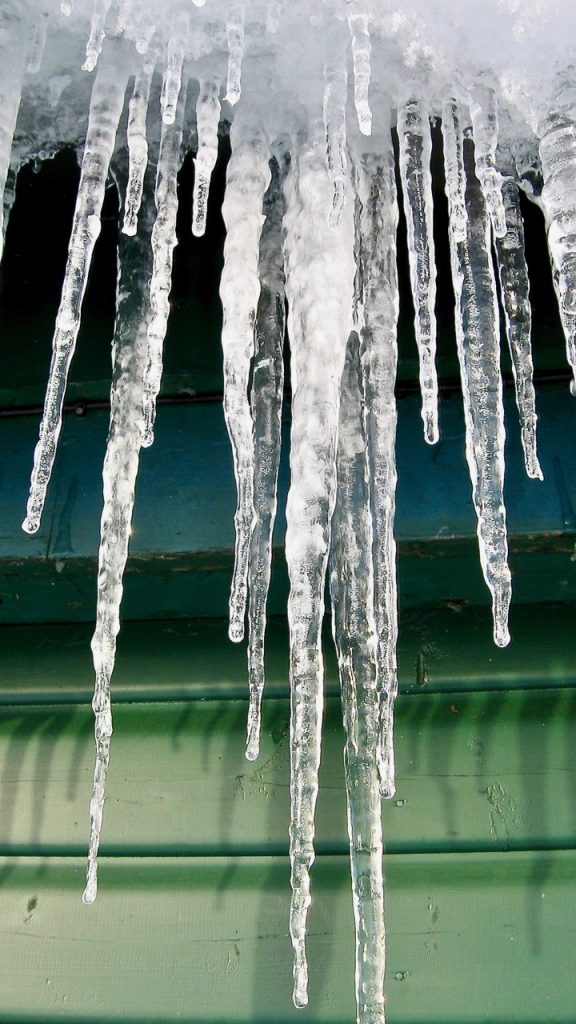
During fierce winters, I’ve watched killer icicles grow from the gutters; some were half a metre long. They can form on greenhouse guttering too. They do eventually come crashing down, so limit the damage by moving at-risk containers of overwintering bulbs, potted plants and cold frames out of harm’s way. A mere hint of a sun-powered daytime thaw will loosen icicles, allowing them to be detached by hand, or carefully dislodged (use a long stick).
Tough stuff
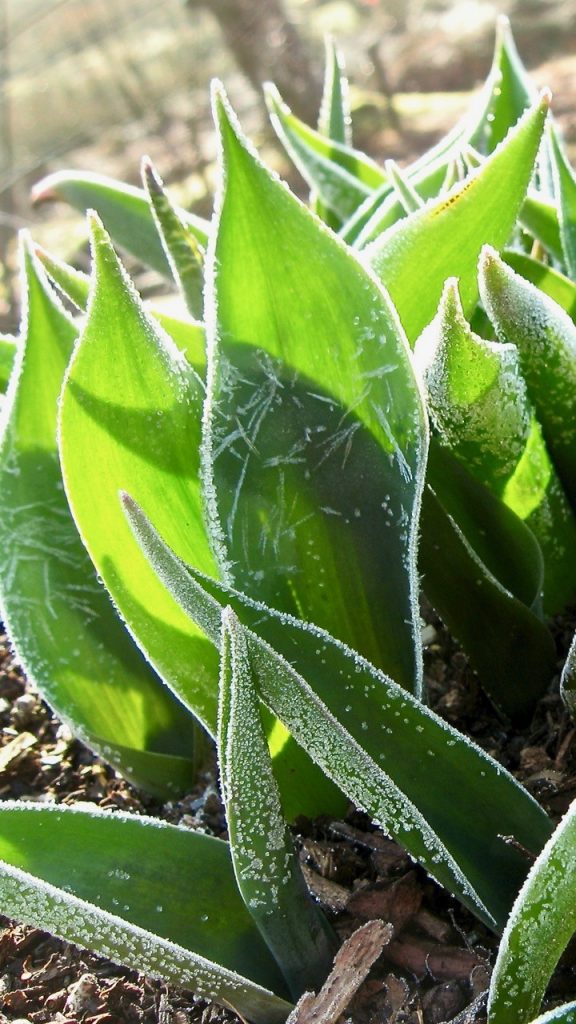
Spring-flowering bulbs have winter hardiness built in. Coddling them, by bringing them into an unheated greenhouse in cold snaps for ‘protection’, does more harm than good. Upsetting their snail-like progress toward spring, by encouraging soft, damage-prone growth, is a mistake. Let them be outdoors come rain, hail, sleet, snow or frost, and they’ll flower all the better for it.
Skin tight
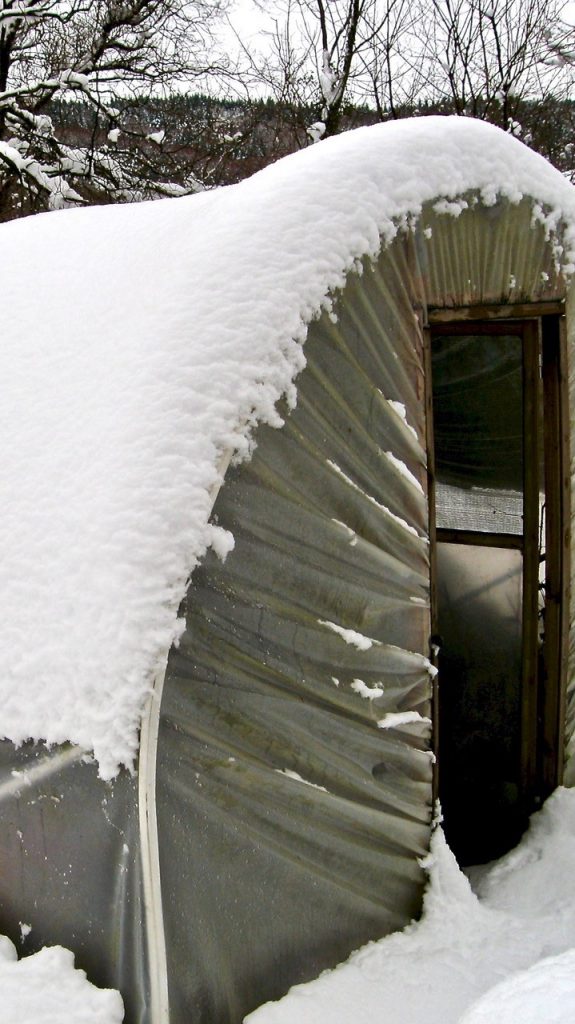
After a fall of snow, it’s tempting to push and punch at the skin of a polytunnel from the inside, to shed the darkening, muffling layer. Don’t! A polytunnel’s plastic skin – especially one nearing the end of its life – is much more brittle and prone to splitting and tearing when it’s subjected to sub-zero temperatures. If you must do some snow-shoving, do it gently from the outside, using a soft broom. Don’t use anything sharp…
Storage alert
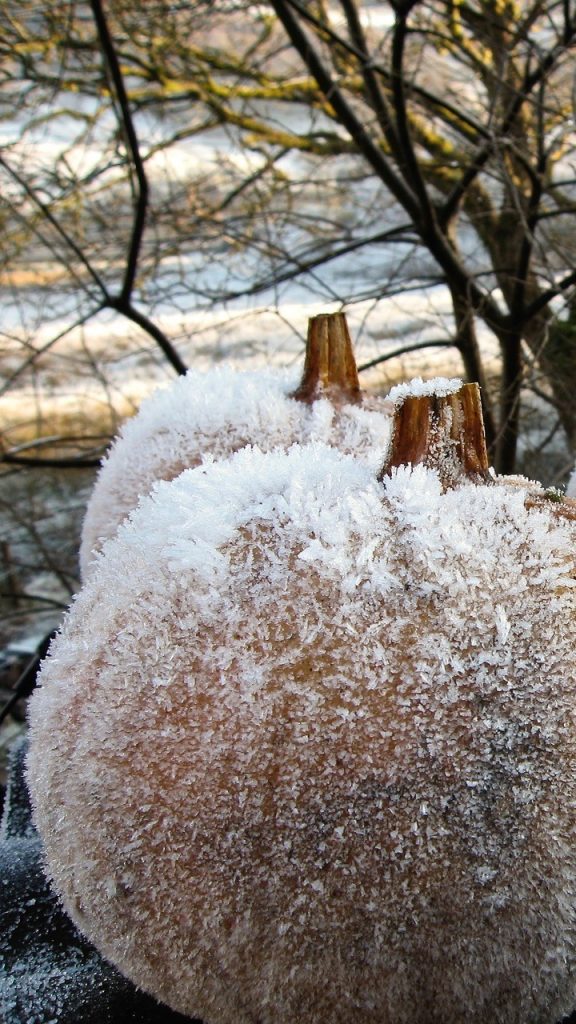
If you’ve still got stored-for-winter squash and pumpkins in a shed (or greenhouse) that’s vulnerable to freezing, don’t chance it on cold, clear nights when the sky’s filled with stars; move them to where they’ll be safe from dipping to freezing (or below). I thought I was being clever by putting these squash out in the early winter sunshine to help toughen their skins, but then forgot to bring them back indoors. The frozen mush made cracking compost.
Death traps
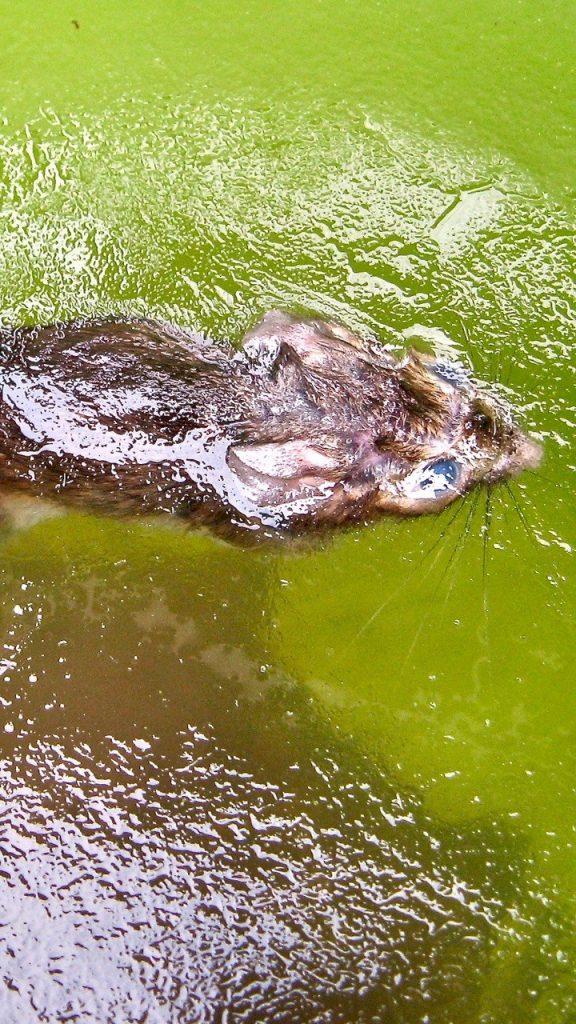
Even a small amount of contained water can prove fatal for wildlife in winter, so make sure you don’t leave any in buckets, trugs, jars, tanks, watering cans, or anything else that can hold water. Turning them upside down ensures they won’t fill up when it rains, and also stops hungry wildlife becoming trapped in them. For the same reason, plug any holes in drained water butts, and put their lids back on tight.
Seasonal magic

On still nights when the sub-zero air is laden with moisture, hoar frost can transform dead and faded stems and flower-heads, giving them a beautiful new lease of life by morning. After buzzing all summer with beneficial pollinating insects, these long-expired wild angelica umbels are encrusted with winter magic. Don’t be too tidy on your patch, or you’ll miss out on treats like this.
Tough food
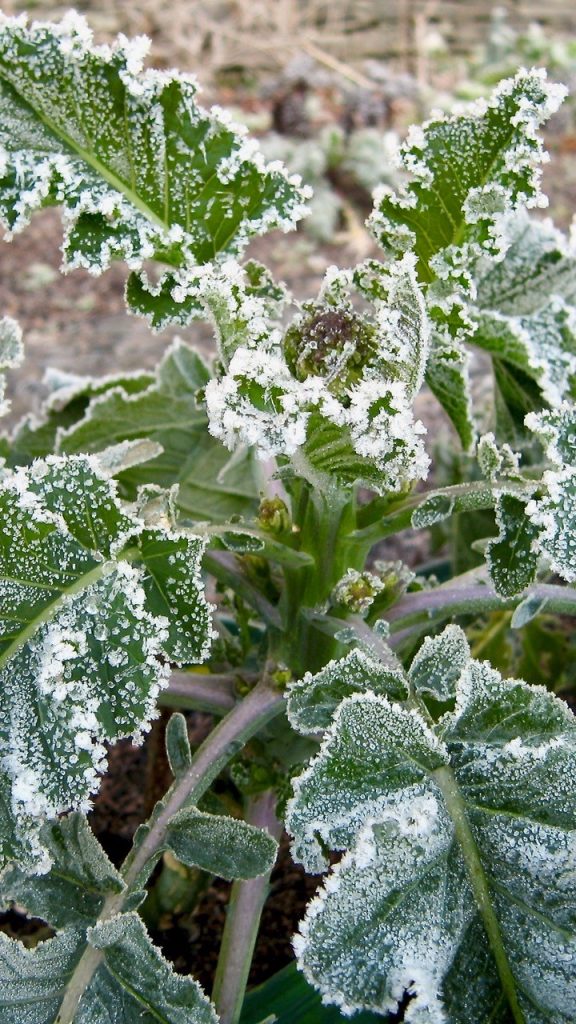
Hardy vegetables such as purple sprouting broccoli will put up with whatever winter throws at them. They’re unfazed by all but the severest frosts, and are more likely to suffer damage from strong, freezing winds. If they get buried under a deep fall of snow, leave them be; it creates a windproof blanket, limiting damage from icy blasts.
Ice plumes

Count yourself lucky if you find weird ‘frost flowers’ in your garden. They ‘bloom’ on dead, waterlogged wood, but they’re nothing to do with frost. These feathery, ephemeral plumes of ice filaments grow out from the pores of the wet wood as it freezes. Eyeball their beauty, but watch your breath – or they’ll be gone in a flash.
Text and images © John Walker
Find John on Twitter @earthFgardener


